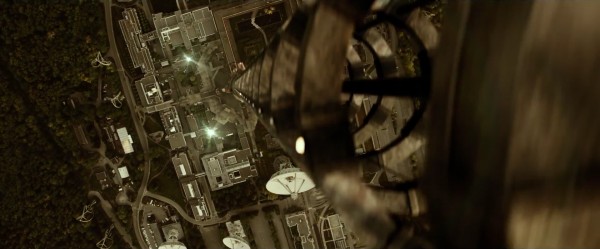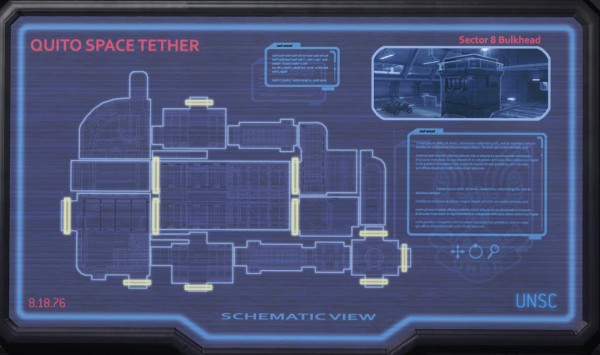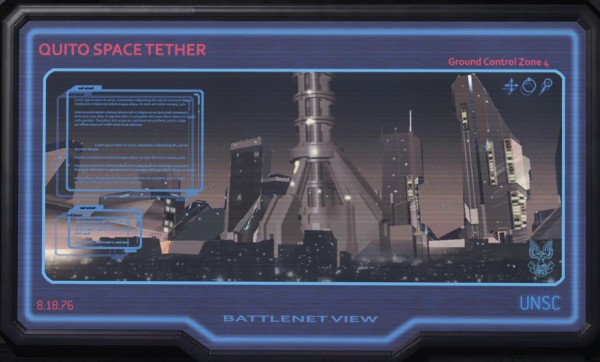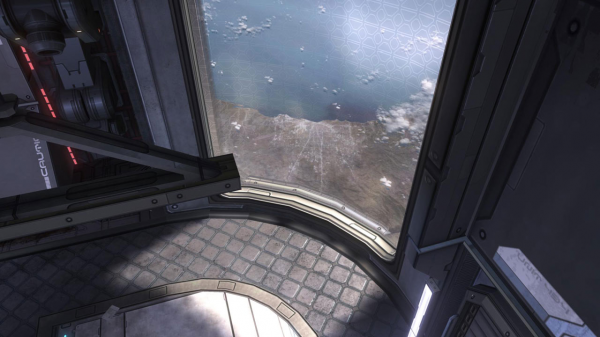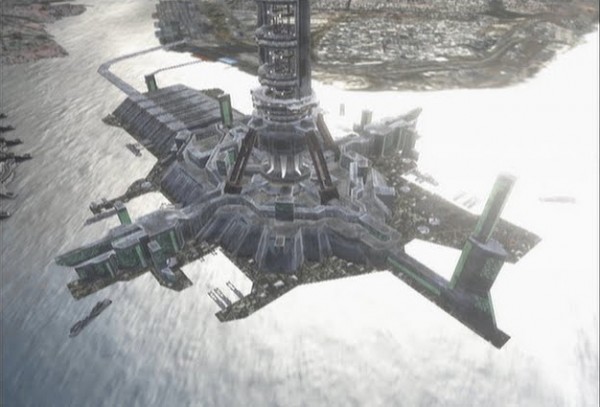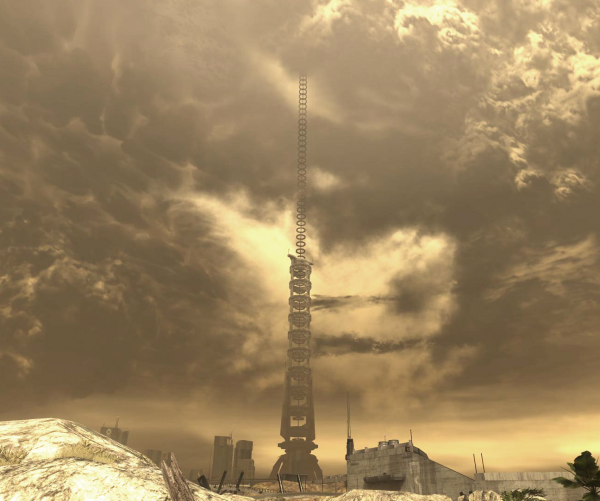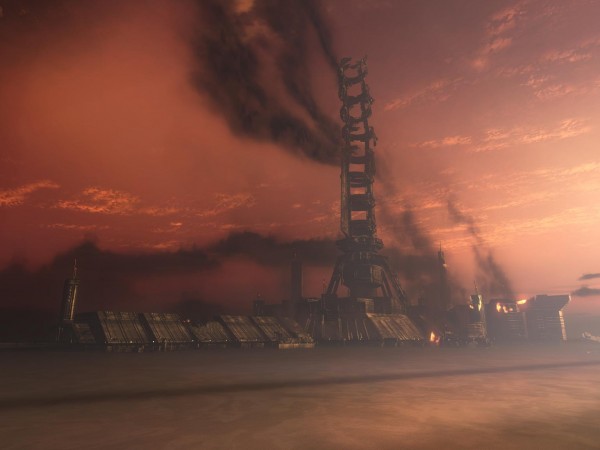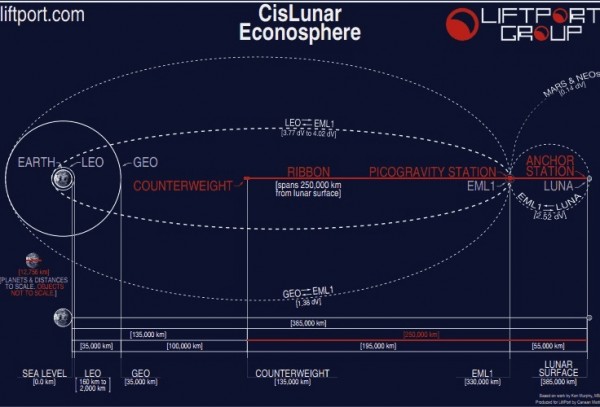Wow, it has been some time since I wrote one of these Science of Halo articles. Well, in a way, I’m glad I waited. The topic in this article is one that I wouldn’t have thought possible during our lifetimes, yet may very well be.
Space Tethers, Elevators, Platforms. Whatever you want to call them, they are incredible constructs that provide easy access to goods shipped via cargo vessels in space as well as a means to transport people to and from the planet and space. We’ve seen them in various Halo games. Could they be real in the future? Let’s explore this fascinating subject and look at both the sci-fii nature of it and the real possibilities.
First up, let’s look at the in-universe space tethers of the Halo franchise.
FICTION
Corbulo Academy Space Platform
We got to see this platform in all it’s glory in Episode 3 of the Forward Unto Dawn miniseries.
It stretches from the planet Circinius IV starting from the Corbulo Academy of Military Science (CAMS) into space.
It came under attack on a fateful day in which nearly all of the students and staff of CAMS were killed.
The destruction of the tether proved costly as not only did the people in the tether at the time of it’s destruction lose their lives, but it also meant nearly everyone else on the ground were trapped on the planet during the Covenant invasion.
Above is the map layout for the multiplayer map in Halo 3. It’s still one of my favorites.
A view of the Quinto space tether as seen from the ground.
A view from space looking down towards Earth. A fantastic and dizzying site at the same time.
A conceptual rendering of the New Mombasa Orbital Elevator (NMOE) from Halo 3: ODST
Another look at it, in it’s finished form.
This is a great view of the NMOE from the ground. Note the sturdy construction at the bottom and the tapering of the tether as it goes skyward.
 The NMOE at the moment of it’s destruction, due initially form the slipspace rupture created by the Prophet of Regrets flagship as it entered splispace next to the tether. It’s quite evident that humanity has not been able to protect their tethers in the Haloverse. This is something we as humanity now need to take into account (should we ever be invaded by an alien race).
The NMOE at the moment of it’s destruction, due initially form the slipspace rupture created by the Prophet of Regrets flagship as it entered splispace next to the tether. It’s quite evident that humanity has not been able to protect their tethers in the Haloverse. This is something we as humanity now need to take into account (should we ever be invaded by an alien race).
The NMOE has fallen…
It spewed a path of debris that stretched thousands of miles long.
The tethers are said to be made of carbon nanofiber.
The following is an excerpt from halo wiki regarding the positioning of the tethers relative to their planets:
The base concept of a Space elevator consists of a cable attached to the surface on the equator and reaching outwards into space. By positioning it so that the total centrifugal force exceeds the total gravity, either by extending the cable or attaching a counterweight, the elevator stays in place in geosynchronous orbit. Once moved far enough, climbers are accelerated further by the planet’s rotation.
The most common proposal is a tether, usually in the form of a cable or ribbon, that spans from the surface to a point beyond geosynchronous orbit. As the planet rotates, the inertia at the end of the tether counteracts gravity and keeps the tether taut. Vehicles can then climb the tether and escape the planet’s gravity without the use of rockets. The engineering of such a structure requires an extremely light but extremely strong material (current estimates require a material ~2 g/cm³ in density and a tensile strength of ~70 GPa). Such a structure could eventually permit delivery of great quantities of cargo and people to orbit, and at costs only a fraction of those associated with current means with little of the danger of conventional sub-orbital travel.
The obvious reason for construction of these tethers is cost. Building a sustainable tether using gravity as a base of movement is much cheaper than conventional booster rockets.
FACT
So now that we’ve taken a look at the fiction of space tethers in the Haloverse, let’s see the fact of today and the possibilities of the future in real life.
To start, instead of building one on Earth, scientists are first looking to the moon as the site of the first space tether. For one, it offers protection for humanity incase of a catastrophic collapse. As well, the reduced gravity of the moon makes this easier to construct and keep aloft.
As mentioned, a space tether would be far less costly. The possibility of sending materials from the moon’s surface to Earth’s orbit is quite possible.
The LiftPort Group of Seattle, Wash is working on one such tether. They are calling it the Luna Space Elevator Infrastructure (LSEI). At present the project would use off-the-shelf technology. That’s quite impressive in and of itself.
Their tether would use a vehicle that would move via the tether. The Seattle group sees the use of a rocket traveling from Earth to a station in space. Then it’s transferred to the robotic lifter attached to the tether and delivered to the moon as a soft landing. They have run tests to determine that the tether could transport up to 36 people to the moon per year in the early years of it’s use.
NASA’s newly announced Lunar Cargo Transportation and Landing by Soft Touchdown (CATALYST) program makes it quite possible that the tether would be used in this capacity.
Jerome Pearson, president of STAR, Inc, has said that a tether from Earth while tough, is not impossible. It would require huge quantities of carbon nanotubes (see that fact vs fiction connection). The biggest issue is the large amount of low Earth orbit debris that could destroy the tether.
To counter that, Pearson’s ElectroDynamic Debris Eliminatro (EDDE) project, a space craft, could remove debris from 4 inches and up from low orbit in 10-15 years from now. He reiterates that the danger of space debris around Earth and the potential for catastrophic collapse are the main reasons for first attempting this on the moon. Another reason is that high strength carbon nanotubes wouldn’t be needs for the lunar tether, again due mostly to it’s greatly reduced gravity.
The following is a diagram from Liftport that shows the basics of where the position of such a lunar tether would be in relation to Earth.
By transporting materials from the moon to the end of the tether, the need to capture an asteroid for a counter weight (an ambitious and dangerous prospect indeed) would be nullified.
The materials from the moon that we would be able to gather could include lunar regolith as well as lunar polar water and potentially Helium-3 for nuclear power. Helium-3 costs millions of dollars per ounce where it’s rare on Earth. However, it’s abundant on the moon, which would dramatically reduce the costs of nuclear power.
Pearson believes that the lunar tether is quite possible by around 2025. Just over ten years from now!!! That in turn if successful would open the way for an Earth tether. The cost of sending materials from the moon to Earth would become essentially free as it’s expected to pay for itself after about 19 payload cycles.
Much of the above in the “Fact” section was paraphrased here from an article on space.com.
So as we can see, not only is a space tether possible, but probable AND in our lifetimes!
-Sal

